
About 300 kilometers from Sydney lies the town of Canowindra, New South Wales. In the 1950s a road worker in Canowindra chanced upon some fossils, and in the 1990s paleontologists started working on the site in earnest, eventually revealing one of the world’s finest assemblages of freshwater animals from the Late Devonian. Most of the fossils from what is now called the Mandagery Formation are housed at the Australian Age of Fishes Museum in Canowindra. I’ve never been there, sadly, but I hear it’s worth the trip from Sydney. One of the stars of this wonderful fauna is the large sarcopterygian Mandageria fairfaxi, the formation’s namesake and the state fossil of New South Wales. Today we ‘ll look at a rendition by Paleozoo.
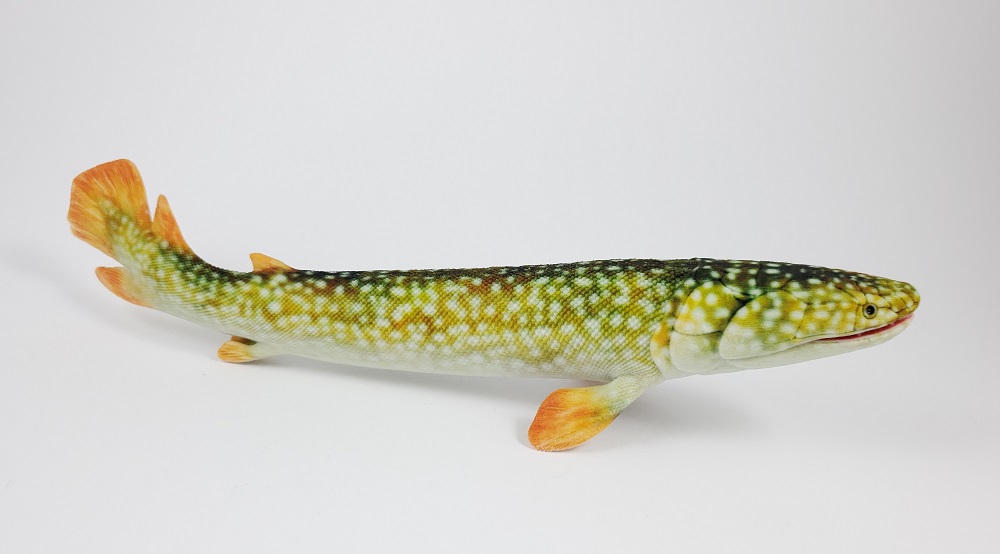
In the Late Devonian, 370 million years ago, this part of Australia was home to a network of rivers and oxbow lakes. The very first dinosaurs wouldn’t appear for another 150 million years. The commonest fishes were probably antiarchs like Bothriolepis and Remigolepis, which were preyed upon by an assortment of predatory sarcopterygians. Mandageria, a 1.5-2 meter long beast, was probably the largest among them. It’s a near relative of the more famous Eusthenopteron, and as such is part of the tetrapod stem-group (meaning that it is more closely related to frogs, lizards, and people than it is to lungfishes or coelacanths).
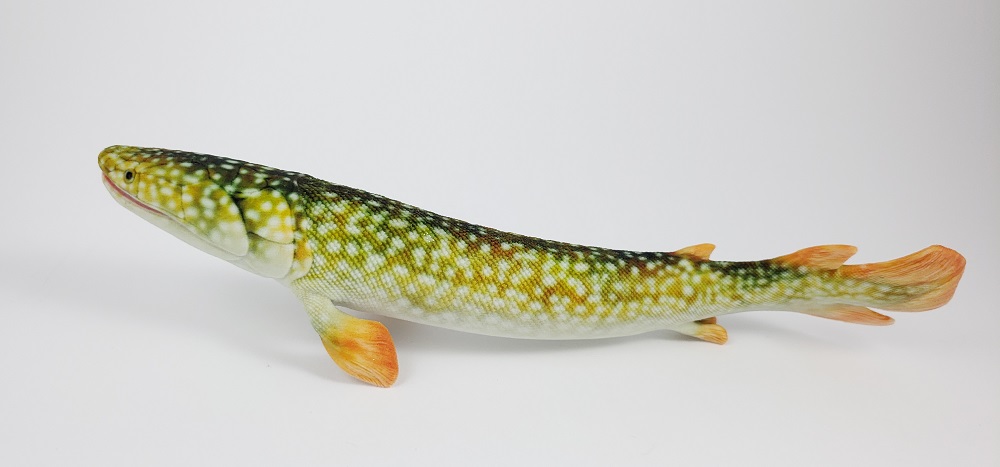
This figure by Paleozoo (the work of Australian designer Bruce Currie) measures about 24 cm long, making it roughly 1:8 scale. Its general body plan–elongated, with anal and dorsal fins pushed back toward the tail–is similar to that of a pike, so it feels appropriate that this figure is rendered with a pattern reminiscent of a northern pike (Esox lucius). The fins’ shapes and positions all look good, and in this shot you can see that the bony scales covering the body of Mandageria are all discernible. Very nice details in this design.
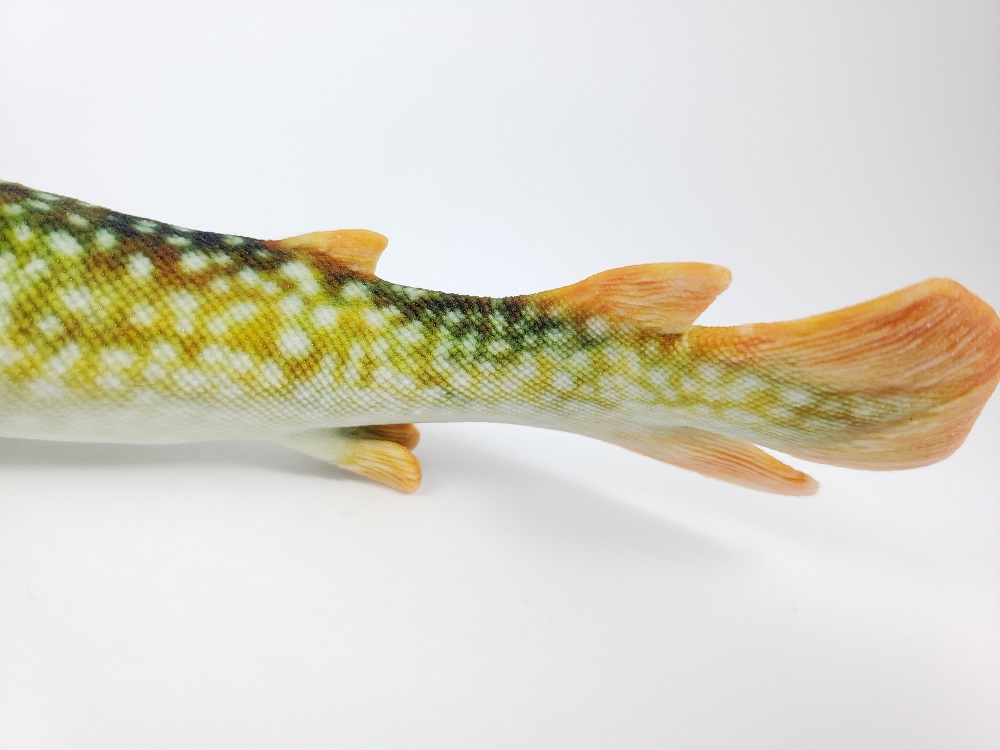
Moving to the head, the designer has clearly arranged every bone with care. The sutures and joints align well with the descriptions of Mandageria’s well-preserved skull. Mandageria had unusual flexibility between the shoulders and head, in essence, a neck, which the vast majority of fishes do not have. The evolution of a neck joint was probably helpful in hunting in a complex freshwater environment, but also made it easier for tetrapods to adjust to life on land–if you don’t believe me, just try looking to your left without turning your neck. Like other Paleozoo figures, it’s 3D-printed in full color from a material called “sandstone,” which is essentially a blend of gypsum and glue. In the shot below you can see some artifacts of the printing process, in the form of fine lines corresponding to the printed layers. I believe the designer does some hand-finishing of these models, but evidently it’s hard to avoid these lines when printing organic shapes.
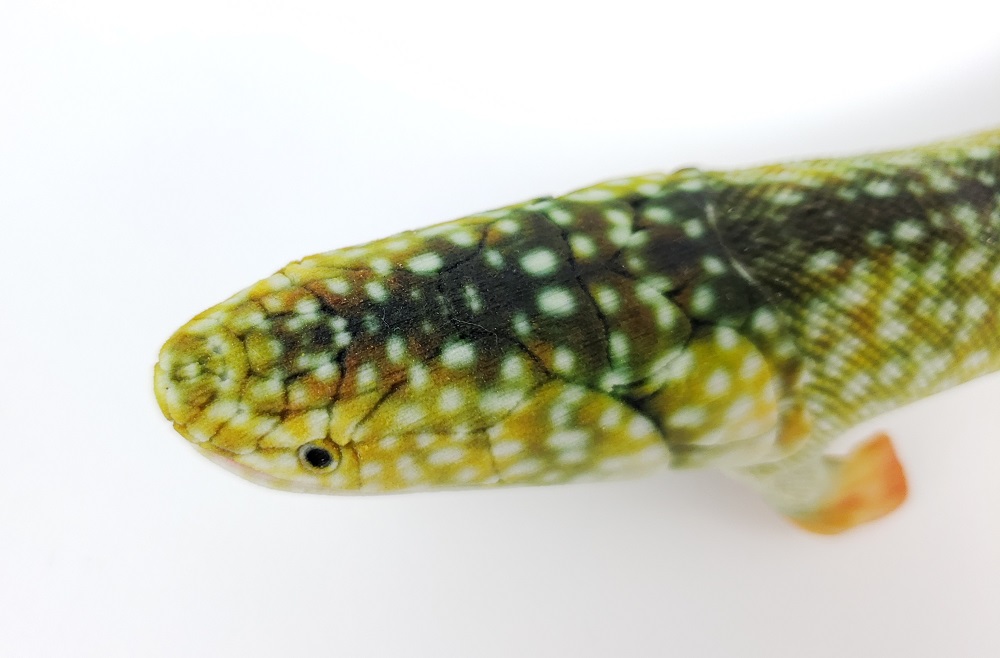
Like other Paleozoo fishes, this model is printed hollow, saving a bundle on material costs and making the figure very lightweight (in turn, it’s cheaper to ship from Australia to your display shelf).
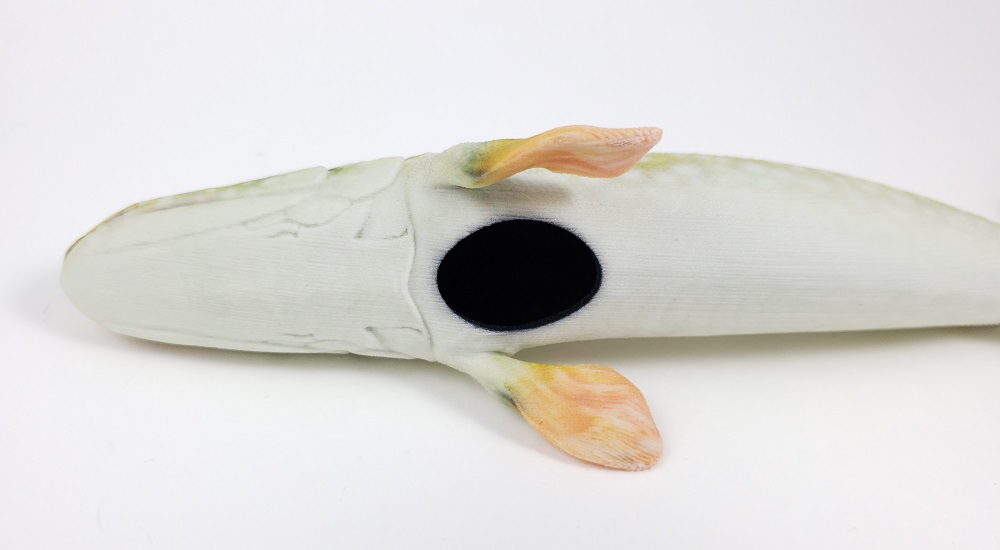
This beautiful and sizable model can be had on Paleozoo’s web site. I held off on writing this review because Mr. Currie seemed to be having trouble keeping it in stock, but it seems to be available again. I can’t recommend it enough for fans of Paleozoic life (and who isn’t a fan of Paleozoic life?). With luck, the Paleozoo line’s expansion will continue to include the diverse and remarkable fauna of Devonian Australia.

Disclaimer: links to Ebay and Amazon on the DinoToyBlog are affiliate links, so we make a small commission if you use them. Thanks for supporting us!




This figures NEEDS to be on the Unique Species Reference list. Tim, can you tell Roselaar to add this ASAP?
This figure is really extraordinary, though I am especially interested in the Mesozoic era and the Cretaceous particularly the Hell Creek formation is in my special fiction when T.rex ruled the earth. There are many debates about lips in the facial texture. After reading Mr.Ford’s article 1997, the keen anatomical details of the facial texture of that immortal theropod contrasts that character, in spite of having teeth (enamel) maintenance reasons.
What is your opinion?
My opinion? I think it’s quite unlikely that Tyrannosaurus walked around with its teeth exposed all the time.
I’m also not sure why we’re talking about Tyrannosaurus on this particular post, but while we’re on the subject I opine that Tyrannosaurus is the most overdone animal in terms of figures and I hope I don’t see another for a very long time. The other denizens of Hell Creek (Acipenser eruciferus, Thescelosaurus, Leptoceratops, Potamornis, Brachychampsa, Thoracosaurus, and Basilemys) would all be welcome additions, however.
I do not understand fish but this mandageria looks magnificent. A very cool figure. Outstanding revision.